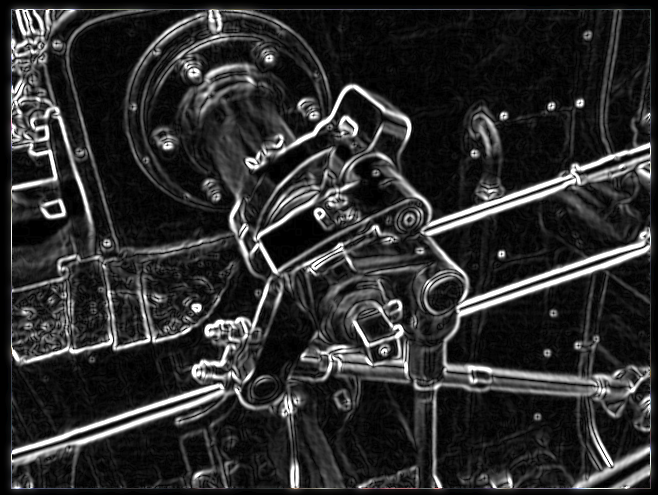Implementing A Sobel Filter With Cuda In Python
A fundamental task in the field of Computer Vision is Edge Detection. A sobel filter, a widely used image processing technique, is used for just this purpose. It helps in identifying edges or boundaries of objects within an image by highlighting the areas with rapid changes in intensity. In this article, we shall explore the Sobel filter and demonstrate its implementation in Python using CUDA for GPU acceleration.

Understanding the Sobel Filter
The Sobel filter consists of two 3x3 convolution kernels: one for detecting changes in the horizontal direction and the other in the vertical direction. These kernels compute the gradient of the image intensity at each pixel, highlighting the edges. The gradient magnitude can be used to identify edges, and the gradient direction can be used for further analysis.
Here are the two Sobel Kernels:
Horizontal Sobel Kernel (`Gx`)
-1 0 1
-2 0 2
-1 0 1
Vertical Sobel Kernel (`Gx`)
-1 -2 -1
0 0 0
1 2 1
The Sobel filter operation involves convolving the image with these two kernels separately and then combining the results to obtain the gradient magnitude.
CUDA Acceleration
CUDA is a parallel computing platform and API developed by NVIDIA that lets us leverage the power of NVIDIA GPUs for high-performance computing tasks. We can use CUDA to significantly speed up the Sobel filter operation on large images.
Let’s implement a simple Sobel filter in Python using the numba library, which provides a CUDA JIT compiler for Python.
Installation
You’ll need to install `numba` and ensure you have an NVIDIA GPU with CUDA support.
pip install numba
Code Implementation
import numpy as np
from numba import cuda
@cuda.jit
def sobel_filter(input_image, output_image):
x, y = cuda.grid(2)
if x < input_image.shape[0] - 2 and y < input_image.shape[1] - 2:
gx = (input_image[x, y] - input_image[x + 2, y] +
2 * input_image[x, y + 1] - 2 * input_image[x + 2, y + 1] +
input_image[x, y + 2] - input_image[x + 2, y + 2])
gy = (input_image[x, y] - input_image[x, y + 2] +
2 * input_image[x + 1, y] - 2 * input_image[x + 1, y + 2] +
input_image[x + 2, y] - input_image[x + 2, y + 2])
output_image[x + 1, y + 1] = np.sqrt(gx**2 + gy**2)
# Load an example image (replace with your image)
image = np.array([[1, 2, 1],
[0, 0, 0],
[-1, -2, -1]])
# Create CUDA device array for the image
d_image = cuda.to_device(image)
# Allocate memory for the output image
output_image = np.zeros_like(image)
# Define block and grid dimensions
threadsperblock = (16, 16)
blockspergrid_x = (image.shape[0] + threadsperblock[0] - 1) // threadsperblock[0]
blockspergrid_y = (image.shape[1] + threadsperblock[1] - 1) // threadsperblock[1]
blockspergrid = (blockspergrid_x, blockspergrid_y)
# Apply Sobel filter using CUDA
sobel_filter[blockspergrid, threadsperblock](d_image, output_image)
# Copy the result back to the CPU
output_image = d_image.copy_to_host()
print("Sobel Filter Result:")
print(output_image)
This code defines a CUDA kernel `sobel_filter` that calculates the Sobel filter on the GPU. It uses the `numba` library to define the kernel and handles memory transfers between the CPU and GPU. The kernel is launched with appropriate grid and block dimensions.
Conclusion
In this article, we explored the Sobel filter, a powerful technique for edge detection in images. We also demonstrated how to implement a basic Sobel filter in Python using CUDA for GPU acceleration, which can significantly improve the filter’s performance on large images.
CUDA and GPU acceleration offer immense potential for speeding up various computational tasks, especially in the field of image processing. You can further enhance this implementation by working with real images and optimizing the CUDA kernel for your specific use case.
By leveraging CUDA, you can efficiently process images, videos, and other large datasets, opening up opportunities for real-time computer vision applications and more.
Happy Coding!
